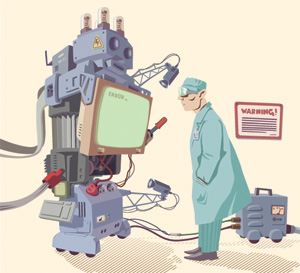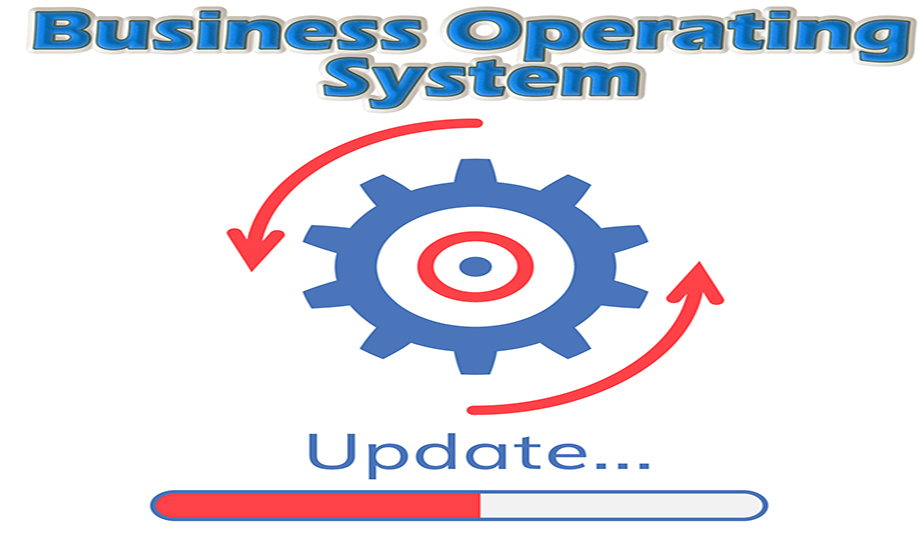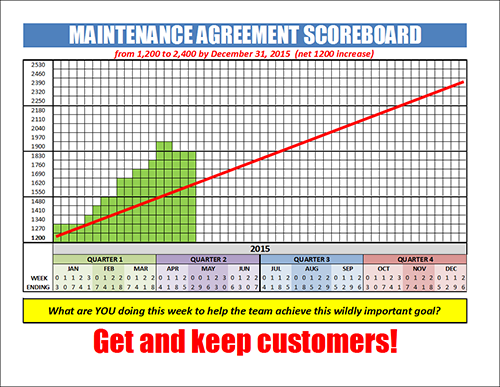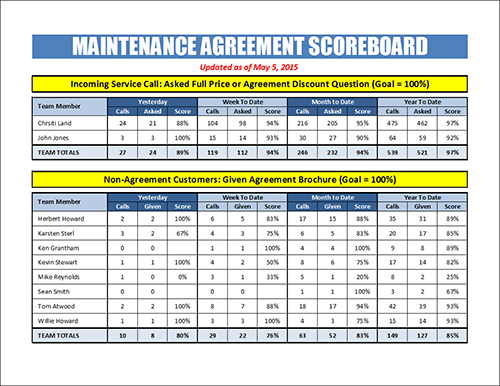Consider this: The “Operating System” (programs like Microsoft’s Windows) is the most powerful program in your computer. Without a powerful operating system, your device is just a collection of parts that do nothing but sit there.
The first business computer on my desk was an Epson QX-10 that featured the “CP/M” operating system. It was a very basic computer that could perform limited functions like word processing and that was about it. While it operated slowly, it was faster than trying to create error-free documents using the typewriter it replaced.
Over the past 30 years, computer operating systems have become increasingly powerful. We’re able to do much more with less effort. Think about the fact that you’re reading this article. It was written on a computer in Georgia and emailed to a computer in Ohio. There it was edited, posted, and delivered to your screen through the Internet – which is another collection of powerful computers. At the center of this amazing result is a super-powerful operating system.
Beyond Computers
As powerful as today’s computers have become, they just do one thing at a time. That’s right – only one thing at a time!
It’s the computer’s operating system (OS) that “directs traffic” within the machine and gets all those instructions processed in an orderly fashion. When you want to run an application program like Word or Excel, the OS gets and keeps all the computer system components (central processing units, keyboards, screens, disk drives, printers, etc.) working together to produce the desired results. Without the all-powerful operating system, you cannot get anything done on your computer.
Your Business Needs a Powerful Operating System, Too!
Just like a computer, your business needs a powerful operating system that “directs traffic” within the company. Your “business operating system” has four major “modules:” leadership, people, processes, and execution. If any one of these modules fails to operate effectively, the business won’t consistently produce the desired results.
Consider this very important statement:
Your business is perfectly designed to deliver the results you are getting right now.
Read it again – slowly – and think about each part of that statement. In a nutshell, this statement says the results you’re experiencing right now (profit or not; calm or chaos; growth or death…) is being produced by a perfectly designed machine called “your business.”
Do you like the results you are experiencing? Congratulations! You probably have a well-designed business operating system in place. Keep up the good work! If you don’t like the way things are running, your business operating system probably needs a tune-up.
It would be great if you could just shut down the business, install a new operating system, power it back up and the begin producing excellent results. Unfortunately, this is impossible for most businesses. While some areas (sales, service, installation, or administration) may not work the way you want, they at least get the job done. So, how do we tune-up the business while it’s still up and running on a daily basis?
“Live Updates” For Your Operating System

You need to be able to do the same thing with your business. It’s already up and running, producing results, and providing paychecks for your team, so you can’t just stop everything and change out your entire business operating system. You need to perform some “live updates” to the parts of the “bOS” (business Operating System) that are not working as well as you’d like.
If your company is like most in our industry, the current bOS was designed by a very good person. I’ll bet that person knows all the ins and outs of an HVAC system, but has no formal training in starting, operating, and growing a business that does HVAC work. As a result, there are likely many parts of the current bOS that need updating.
Before starting, recognize that day-to-day operations must continue while applying updates to eliminate the BUGS in your bOS. With this in mind, use methods that won’t bog down during the daily chaos of sales calls, service calls, maintenance calls, installation jobs, vehicle maintenance, payroll, accounts payable, etc.
Think of it this way — You discover fleas on your dog. Now you can eliminate ALL of the fleas at once by throwing your dog into a large blast furnace, but you’d kill the dog in the process. Not acceptable! Instead, you apply a flea treatment that takes those pesky bugs out one at a time without killing your dog – a much better approach. We need a similar approach when trying to eliminate the bugs in our business operating system.
Executing the Fleas

- FOCUS – Just like the computer, you can really only do one thing at a time with your finest effort. Therefore, you must learn to set aside time (20% of your work week is a good target) to really concentrate on updating the parts of your business that have the biggest bugs.The best way to identify what to focus on is to answer this question: “If every other area of our business remained at its current level of performance, what is the one area where change would have the greatest impact?” Then, using the answer to this question, develop a focus statement using the format “From X to Y by When.”For example, let’s say you want to grow your maintenance agreement program. You currently have 1,200 agreements, but you want to double that number this year. Your focus statement would be “From 1,200 to 2,400 maintenance agreements by December 31, 2015.” As you update the business processes required to accomplish this goal, always consider the focus statement. If a pending decision doesn’t support the accomplishment of the focus statement, you don’t do it.
- LEVERAGE – We define leverage as “the power or ability to act or influence people, events, activities, or decisions; to sway; the action of a lever (a rigid bar) that moves a large object by pivoting at a point close to the object by force applied at the opposite end of the lever.”Step 2 involves identifying those decisions, events, and activities that will influence the achievement of the goal established in your focus statement. This can involve changes in policies, processes, tools, materials, and/or forms. In every case it involves changes in the behavior of people.Using our maintenance agreement example, a “leverage” activity would be the CSR asking “will you be paying full price today or do you receive our maintenance agreement customer discount?” when taking incoming service call requests. Another leverage activity is the presentation of a maintenance agreement brochure on every non-agreement customer service call.
- ENGAGEMENT – Keeping your people fully engaged in achieving the focus statement goal requires everyone on the team to know whether they’re winning the game or not. The best way to do this is by maintaining accurate, current, and compelling visual scoreboards that everyone can see and understand.A compelling scoreboard tells the team where they are and where they should be – vital information essential to problem solving, decision-making, and performance achievement. Great teams know, at every moment during the game, whether or not they’re winning or losing.For example, your “team scoreboard” for achieving the maintenance agreement goal would look something like this:
In addition, you would create “player scoreboards” that focus on the “leverage activities” that lead to the accomplishment of your goal. Such a scoreboard might look something like this:
- ACCOUNTABILITY – Once the focus, leverage, and engagement components are in place, the accountability component moves things in the right direction. You need regularly scheduled weekly meetings dedicated exclusively to discussing activities related to achieving the defined goal. Your team will report on commitments made, review scoreboards, and plan for the upcoming week. It’s critically important these meetings occur weekly because it creates a consistent rhythm of accountability.In a meeting dedicated to moving our maintenance agreement goal forward, the weekly meeting agenda would look something like this:Report on commitments. “I committed to present an agreement brochure to every non-agreement customer I served since our last meeting. I missed two opportunities because I ran out of brochures on my truck.”Study the scoreboard. “We currently have 1,830 maintenance agreements, which is about 200 better than our goal for this time of year. While this is great news, some activities that successfully lead to adding maintenance agreement numbers aren’t performed at 100%. This is troubling.”Plan activities. “I’ll make sure to get more brochures on my truck today and do a better job of keeping them in stock for the future.”
So there you have it! Giving your business operating a system a tune-up is much easier when you implement the FLEA Execution Plan. Need help getting this plan in place in your business? Just contact me and I’ll see how we can help!



